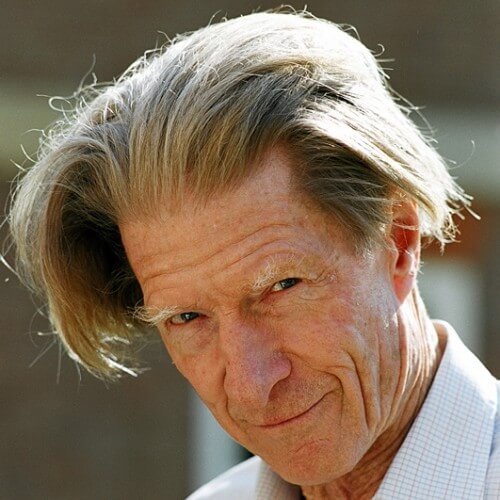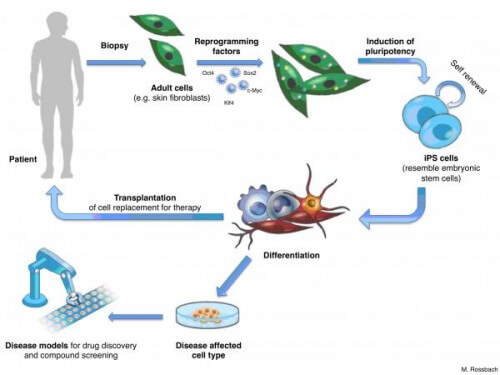Adult cells that have turned back into stem cells enable countless simultaneous advances in many different fields of medicine. We have reported on some of them in recent years on the Hidan website, including: heart cells and beta cells in the pancreas in diabetic patients

If there was an unsurprising topic in his choice to win the Nobel Prize, it was the topic of induced stem cells. We are all used to hearing about embryonic stem cells, a topic that made headlines when President Bush signed an executive order banning federal funding for research dealing with them.
A federal court recently approved continuing federal funding for embryonic stem cell research, as President Obama signed when he entered the White House, but the surprise was to find among the petitioners who demanded to prevent the funding also scientists - those who deal with adult stem cells and induced stem cells.
The difference between mature stem cells and induced stem cells is simple. Mature stem cells are cells that are found in the bone marrow and some tissues in the body and can develop into a variety of cells - some into different types of blood cells, others - into different types of cells, but these cells cannot become any cell but only finish the differentiation they started, on the other hand, induced stem cells They are normal cells, it is generally accepted to take skin cells which are the most accessible cells in the body, and reprogram them so that they become a sort of stem cells that can become any cell and tissue in the body, just like embryonic stem cells and in contrast to adult stem cells that are limited in their ability to differentiate.
Life - a journey towards overspecialization
We all evolved from fertilized egg cells. During the first days after conception, the embryo is composed of immature cells, each of which has the ability to develop into the types of cells that form the adult being. These cells are called pluripotent stem cells. In the further development of the embryo, the cells become nerve cells, muscle cells, liver cells and all other types of cells - each of them is specialized and has a specific task in the adult body. This journey from an immature cell to a specialized cell was previously thought to be one-way. The explanation was that the changes in the cell are made during maturation and there is no longer the ability to return the cell to its immature - pluripotent stage.
Frogs jump backwards in development
John B. Gordon challenged the prevailing view that specialized cells are irrevocably committed to their fate. He hypothesized that the genome might still contain all the information needed to determine the development of all the different cell types in an organism. In 1962 he tested the hypothesis by replacing a cell nucleus in a fertilized frog egg with a cell nucleus from the intestine of an adult frog. The egg developed into a cloned frog. In further experiments he succeeded in developing adult frogs. The nucleus of the mature cell has not lost the ability to derive the development of a complete and functioning organism.
Gordon's groundbreaking discovery was initially met with skepticism but was accepted when it was confirmed by other scientists who were able to repeat it. He began massive research and the method was further developed, which eventually led to the cloning of mammals (the most famous being Dolly the sheep). Gordon's studies showed us that the nucleus of a specialized adult cell can return to the pluripotent state. However, his experiment involved removing the cell nucleus using pipettes and transferring them to other cells, is it possible to return the entire cell to the pluripotent state of a stem cell?
A round trip - an adult cell turns into a stem cell?
Shinya Yamanaka was able to answer this question in a breakthrough he made over 40 years after Gordon's discovery. His research dealt with embryonic stem cells, ie pluripotent cells isolated from an embryo and grown in the laboratory. Such stem cells were first isolated from mice by Martin Evans (2007 Nobel laureate) and Yamanaka tried to find the genes that keep them immature. When several of these genes were identified, he tested whether any of them could reprogram mature cells and turn them into pluripotent stem cells.
Yamanaka and his partners inserted these genes in different combinations into mature cells from connective tissues - fibroblasts, and examined the result under a microscope. They finally found a combination that worked, and the recipe was surprisingly quite simple. By inserting four genes together, they were able to reprogram the fibroblast into immature stem cells.
The result is called induced pluripotent stem cells (iPS) that can develop into any cell such as fibroblasts, nerve cells and intestinal cells. The discovery that mature cells can be reprogrammed into pluripotent cells was published in 2006 and was immediately considered an important breakthrough.
From a surprising discovery for medical use
Gordon and Yamanaka's discoveries showed that specialized cells can reverse the developmental clock under certain circumstances. Although their genome undergoes changes during development, these changes are not irreversible. We have gained a new perspective on the development of cells and organisms.
Researchers in recent years have shown that iPS cells can become different cells in the body. The discovery also provides new tools for scientists all over the world and has led to development in many fields of medicine. iPS cells - induced stem cells - can also be used in humans.
Skin cells can be taken from patients with serious diseases, reprogrammed and tested in the laboratory to see how they differ from healthy cells. These cells enable the development of valuable tools for understanding disease mechanisms and provide new opportunities for the development of healing technologies.

Gordon: The goal: to provide replacement cells for the heart and brain from skin or blood cells
Sir John B. Gordon (Gurdon) was born in 1933 in Deepnahall in Great Britain. He received his doctorate from Oxford University in 1960 and was a postdoctoral fellow at the California Institute of Technology. He joined the University of Cambridge in 1972 and served as Professor of Cell Biology and Head of Magdalene College. He is currently the head of the Gordon Institute in Cambridge. In this framework, he described his research as: "an attempt to find ways to obtain embryonic cells from cells of an adult person.:
"The ultimate goal is to provide replacement cells for each cell type from cells that are easy to obtain in an adult. For example, we would like to find ways to obtain replacement heart or brain cells from skin cells or blood cells."
Shinya Yamanaka was born in Osaka, Japan, in 1962. He completed his doctorate in 1987 at Kobe University and trained as an orthopedic surgeon before moving into basic research. Yamanaka received his doctorate from Osaka University in 1993. He then worked at the Gladstone Institute in San Francisco and the Nara Institute of Science and Technology in Japan. Yamanaka is currently a professor at the University of Tokyo and a fellow at the Gladstone Institute.

6 תגובות
There is no doubt that these are studies that deserve the prize. It was clear that Yamanaka would get the Nobel. The only question was when. It is worth noting that, of course, we still do not know how to sort embryonic or induced stem cells into all existing cell types, and certainly not to create complex organs from them. They have already managed to sort induced stem cells into nerve cells, blood cells, and more. To the best of my recollection, researchers in Israel also managed to create beating heart cell tissue.
In terms of contribution to medical research, many studies have already been done in recent years with induced stem cells. The beautiful part is that you can take mature and sorted cells from a patient of some disease (usually diseases that have some genetic component), reprogram them to receive induced stem cells, and then re-sort in the relevant direction (for example, into nerve cells if it is a disease that damages nerve cells , or to blood cells, etc.). In this way, the development of the disease can be monitored in cells in culture or in mice, in a very convenient and controlled manner.
In terms of using induced stem cells for healing - it will probably take a good few more years. The beautiful part from this point of view is that mature cells can be taken from the patient himself, induced stem cells can be produced from them, the problem corrected in the cell culture (outside the body), then sorted back in the desired direction, and implanted in the patient. This is how you actually "bypass" the need to find a donor and match tissues (because the donor is actually the patient himself). A significant breakthrough in this regard was achieved by an Israeli researcher named Yaakov Hana, during his post-doctorate in the USA in 2007 (with a researcher named Rudolf Jaenisch). They created induced stem cells from mice with a genetic blood disease (thalassemia if I remember correctly), corrected the genetic defect in the cells, sorted them to create blood system stem cells (what is in the bone marrow) and transplanted them back into the mice - which recovered from the disease.
In short - a really interesting and promising field, both from a research and medical point of view.
Habibi - the haircut is not relevant at all, for my part, whether it be iced or dyed hair - the very discovery causes a huge delay. I heard about it yesterday in the news, by the way, and I still don't understand how it is not talked about more and more because it is a sensational breakthrough (at least in my unprofessional opinion).
Yes, there will be more people like him in the world who are engaged in construction and rescue and not in destruction and destruction.
If he can walk down the street with that haircut without getting beaten up then he should also get a Nobel Peace Prize.